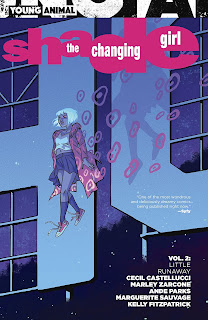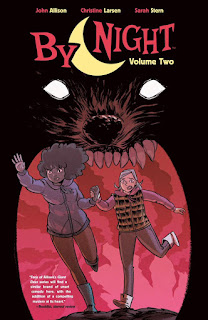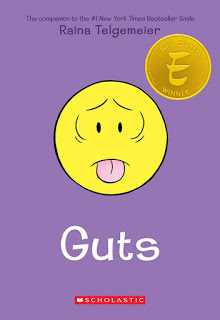Superman Smashes the Klan by Gene Luen Yang and Gurihiru
A note to copyeditors of the future: the radio story from 1946 is “The Clan of the Fiery Cross,” styled in roman within quotation marks and spelling Clan with a capital C. The 2020 graphic novel loosely based on that radio play is Superman Smashes the Klan , in italics and spelling Klan with the K used by its namesake.
One suspects the relative political power of that real-world Klan, and possibly of the corporate entities that owned (then) National Periodical Publications and (now) DC Comics, are responsible for the switch from C to K. But that’s outside my remit here.
That radio story has been mentioned as a major factor in the waning power of the real-world Klan in the post-war years. I’m not a historian, but it makes sense to me — they are not generally called out as strongly active during the main civil rights era beginning the next decade, so the timing, at least, makes sense. And it’s a comforting message to superhero fans: See! we can do good work in the world, and not have to make any effort at all! Just being a fan of Superman makes the world better!
This graphic novel is not driving that message. Stories themselves generally don’t; stories are about action, not feeling good about yourself for liking those stories. The active verb in the title is there for a reason: this Klan of the Fiery Kross needs to be smashed, and it will not go away quietly by itself.
And, while Superman is the subject of the title sentence, he’s not alone here: Superman alone cannot smash the Klan. That takes more people: a Black police detective, some familiar reporters named Lois and Jimmy, the members of the Lee family at the center of this story, and even a local white kid at first hostile to his new neighbors. One might even say it takes a city, or a village.
The Lee family are moving to a leafy Metropolis neighborhood in 1946 at the beginning of Smashes the Klan, moving out of Chinatown largely because the father, Dr. Lee, is taking a job as chief bacteriologist of the Metropolis Health Department. They meet their new neighbors, who are mostly friendly — especially once it’s clear son Tommy will be a big asset to the baseball team fielded by the local interfaith Unity House. But our viewpoint character in the Lee family is daughter Roberta, who is less sure about their new neighborhood and home.
Tommy’s rocket arm dislodged Chuck Riggs, previously the star pitcher, from that position, which does not leave Chuck happy. Chuck’s Uncle Matt is also coincidentally — this is a Superman story — the local Grand Scorpion of the Klan of the Fiery Kross, so he seizes Chuck’s grievance and the Lees mere presence in their neighborhood as reason for an old-fashioned cross-burning and fire-bombing.
The Lee’s house is saved by quick action by Tommy and by neighbors, including that Black detective, Inspector Henderson. (Whose help Dr. Lee at first does not want, when he thought Henderson was just a random local Black man.) Daily Planet reporters arrive the next morning to report on the situation — of course it’s Lois Lane and Clark Kent, since the Planet has never had any other reporters in seventy years of operation.
But Superman is dealing with assimilation issues of his own. The day before, he fought a Nazi would-be supervillain, Atom Man, and kept him from destroying the Metropolis Dam. But Atom Man is powered by a strange green crystal — anyone who has ever consumed any Superman story is nodding right now — and that gives Superman first a strange wave of nausea and weakness, and then continued hallucinations of two figures who claim to be his real parents, aliens who rocketed him to Earth from the doomed world Krypton. (Well, they’re not that succinct and specific to begin with. But we know the story, and it is the same story.)
Tommy gets in more danger, the Klan continues to foment violence, and that green crystal will of course come back. Dr. Lee’s employer, and some of his co-workers, turn out to be quite different than what we had expected.
In the end, Superman Smashes the Klan. But he can’t do it alone. And he can’t do it without confronting his own past and understanding who he is: without publicly claiming his place as an immigrant and alien. His story — an immigrant, coming to a new place, and wanting to be friendly and helpful — is explicitly twinned with Roberta’s, and with all of the other people the Klan hates.
This is a story for younger readers, and a story about Superman, so you can be assured everything will work out for the best, and only the most unredeemable will be smashed — anyone who can be brought around will be. Writer Gene Luen Yang will make sure of that, as he also makes his story deeper and more resonant than a Superman tale for pre-teens had to be. Art team Gurihiru gives it all a modern, clean, manga-lite look — easily readable and dynamic.
This is a book a lot of Americans should read: there are far too many Chuck Riggses out there, unthinkingly racist and led by family members or friends or media to believe evil things and, in far too many cases, to do evil things. This story says that most of them are redeemable; I would like to believe that. But they have to want to be redeemed. They have to want to smash the Klan.
For those who do, this book is there for you. And if you’re in a position to put this book in front of a Chuck Riggs, someone who might be amenable to it but does not, right now, want to smash the Klan — doing that would be a very good thing.
![]()
![]()
Reposted from The Antick Musings of G.B.H. Hornswoggler, Gent.

































































